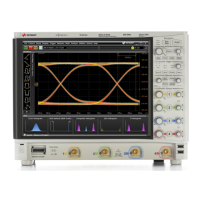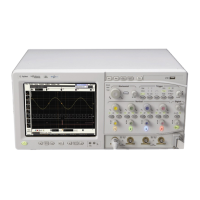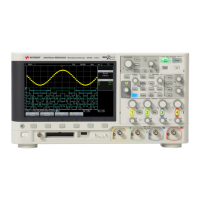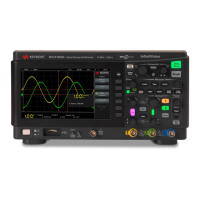30 S-Series Oscilloscopes Service Guide
3 Testing Performance
22 Set the DC supply voltage to -60.0 mV (or -2 V for the 1 MΩ version of this
test).
23 Press [Clear Display] on the oscilloscope, wait for the number of averages to
return to 256, and then record the DMM voltage reading as V
DMM-
and the
scope V avg reading as V
Scope-
in the Offset Accuracy Test table (either the 50
Ω or the 1 MΩ version of the table depending on which version of the test you
are using). Fill in the V
error-
column by using the following equation:
V
error-
= V
DMM-
- V
scope-
V
error-
must be within the limits specified by the corresponding Offset Accuracy
Limit listed in the table.
24 Repeat steps 17b and 18 to 23 for the remaining channel 1 vertical scale
settings in the Offset Accuracy Test section of the Performance Test Record
(either the 50 Ω or the 1 MΩ version of the table depending on which version of
the test you are performing). For each measurement, set both the DC supply
voltage (External Supply Setting) and the Channel offset voltage to the positive
External Supply Setting value and then to the negative External Supply Setting
value in the External Supply
Setting column of the Offset Accuracy Test table
for each of the vertical scale settings.
25 Move the Tee connector to the next channel input and repeat steps 17 to 24 for
channels 2 to 4.
26 Repeat steps 16 through 24 for the 1 MΩ channel input impedance setting. This
means you should follow the directions exactly as stated except in step 18 you
will select the 1 MΩ button instead of the 50 Ω one and all values will be
entered in the Offset Accuracy Test (1 MΩ) section of the Performance Test
Record rather than the Offset Accuracy Test (50 Ω) section. Also be sure to use
the external supply settings and offset values from the 1 MΩ version of the
Offset Accuracy Test table as they are different than the 50 Ω version.

